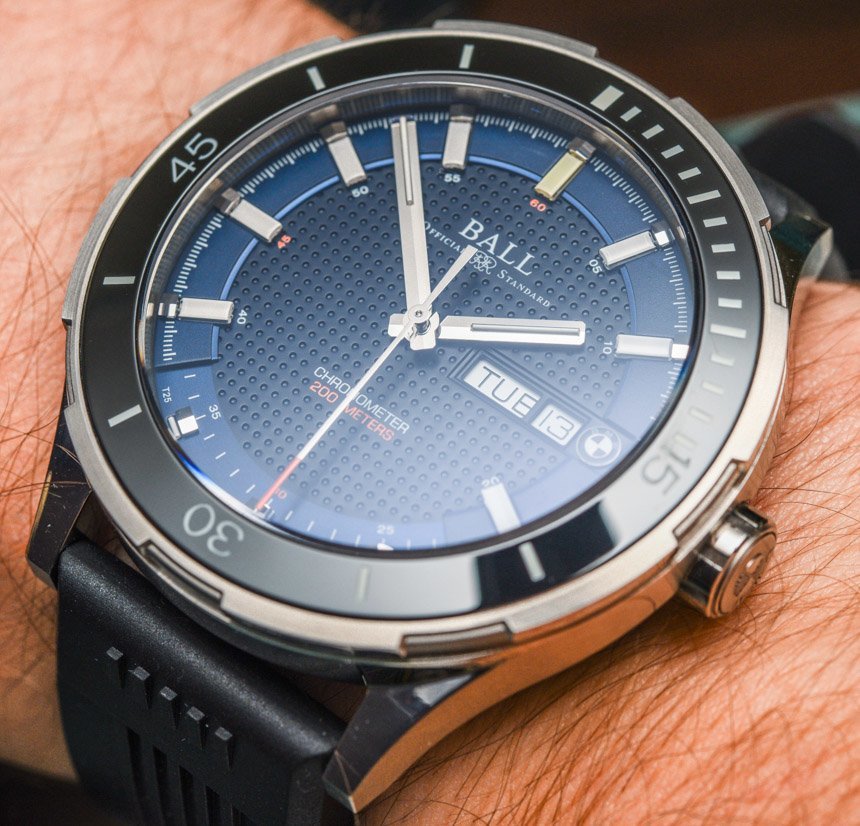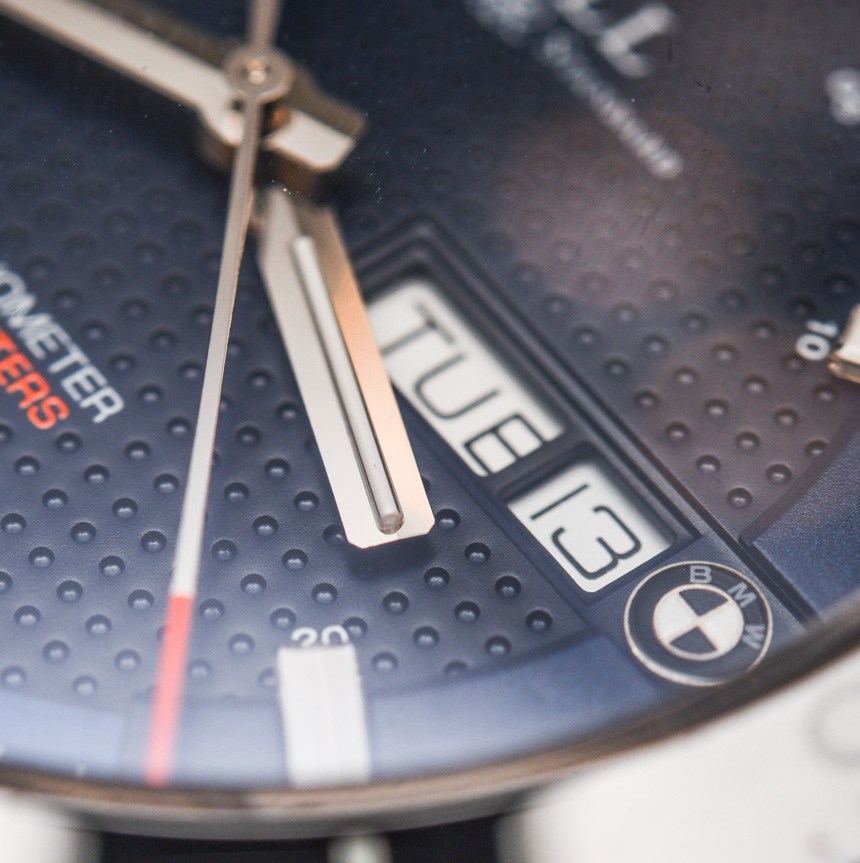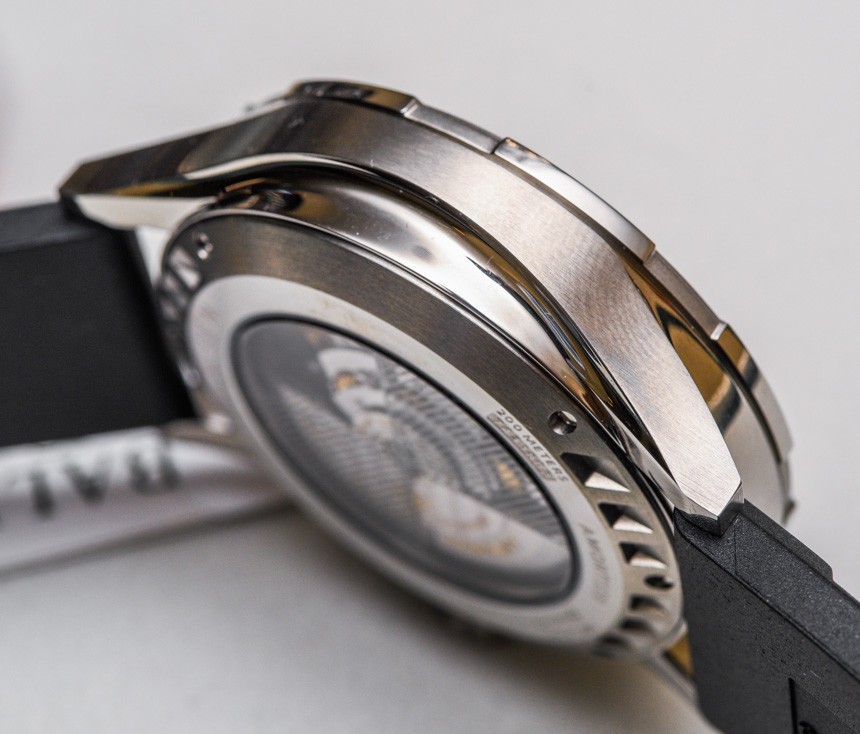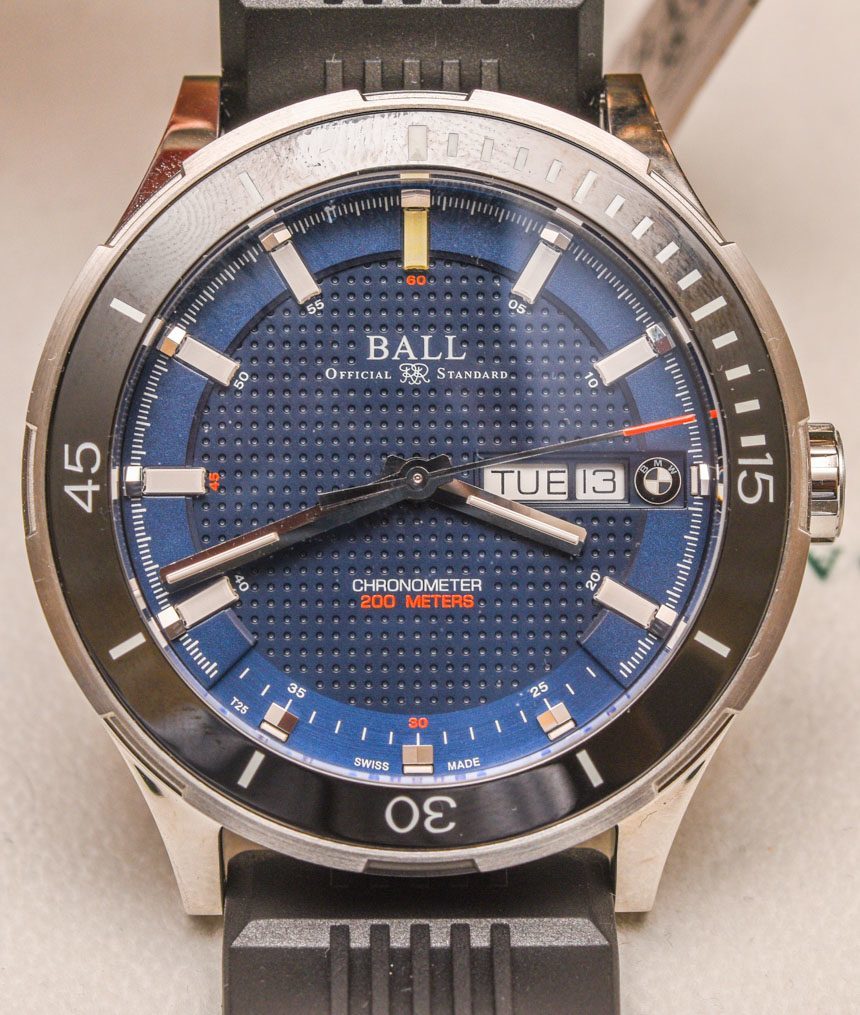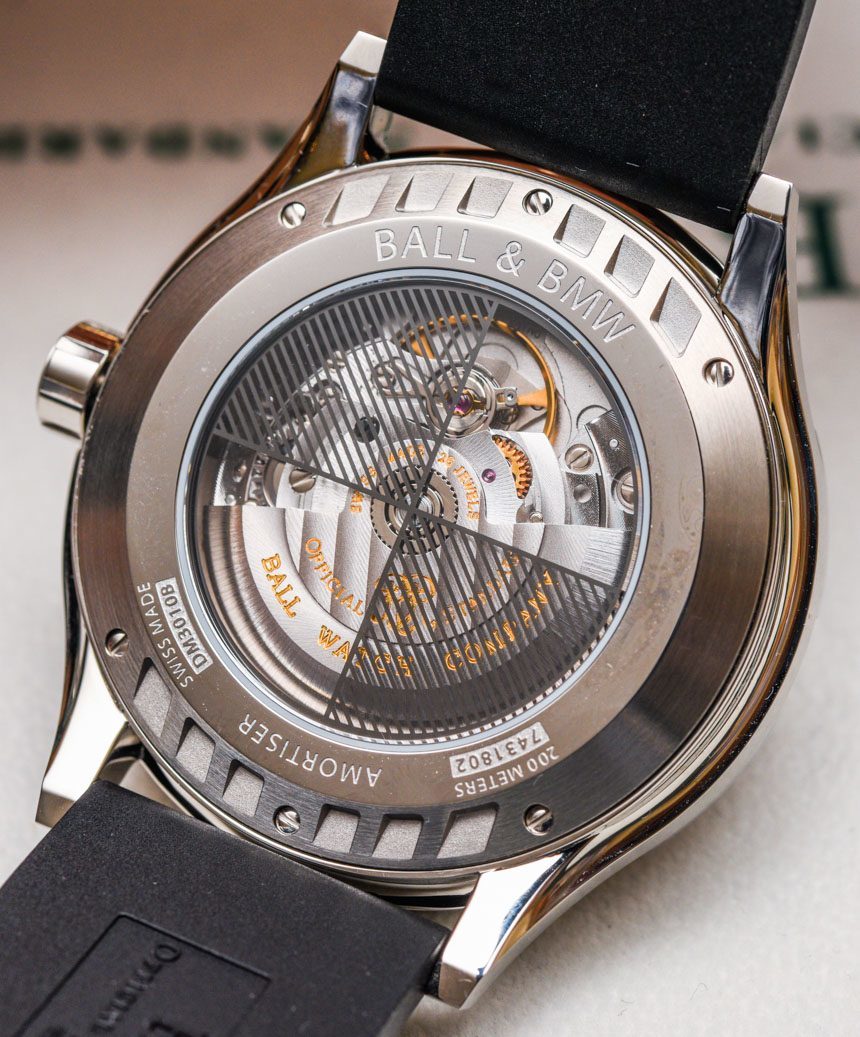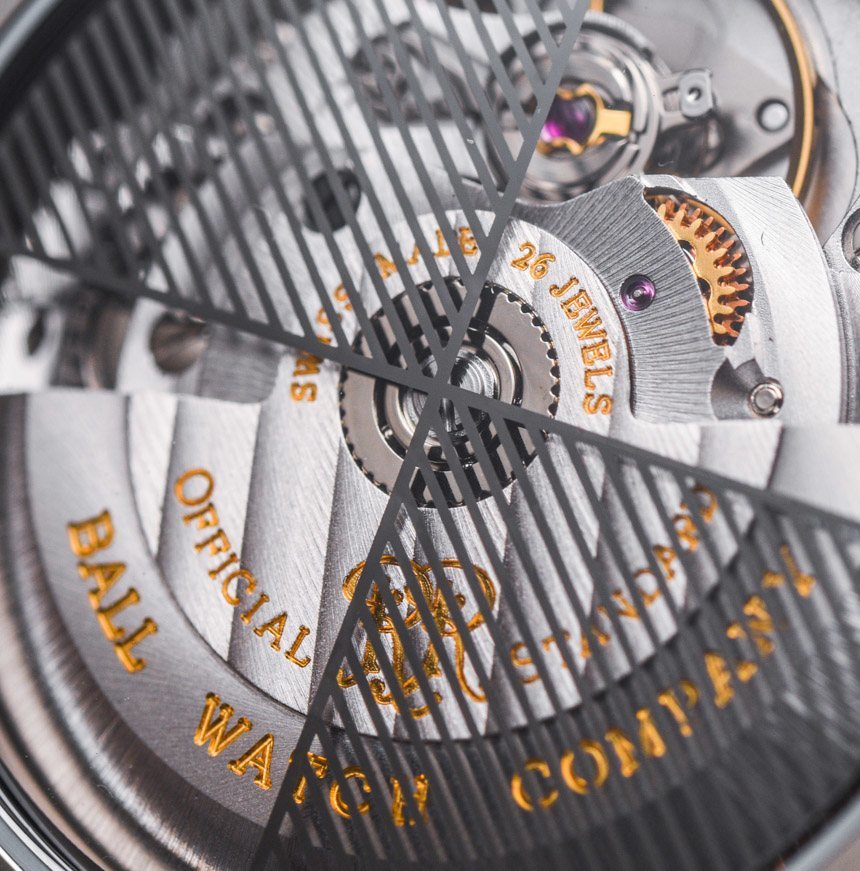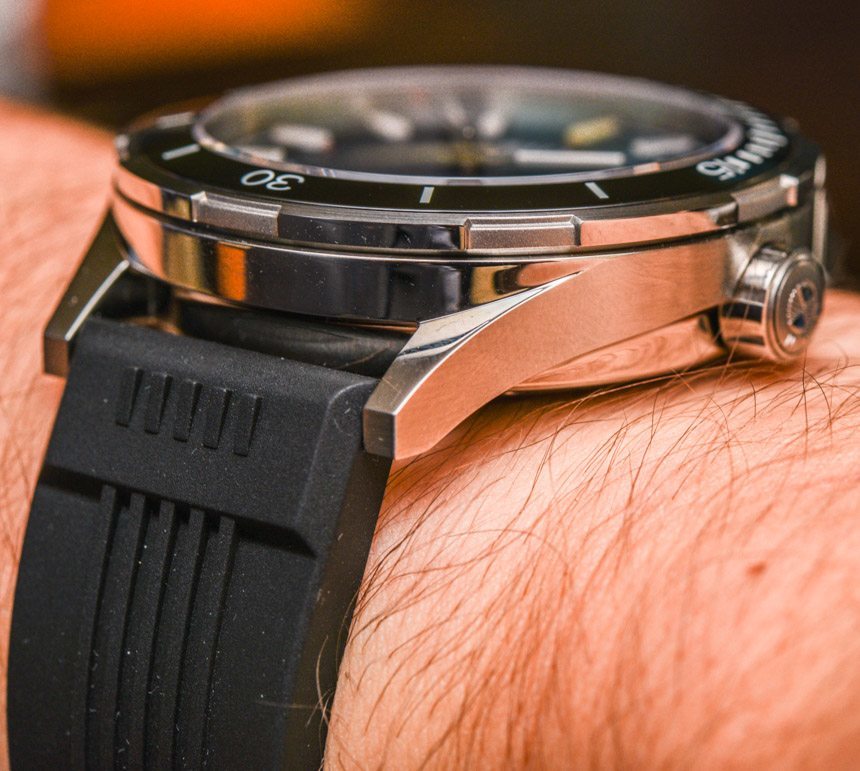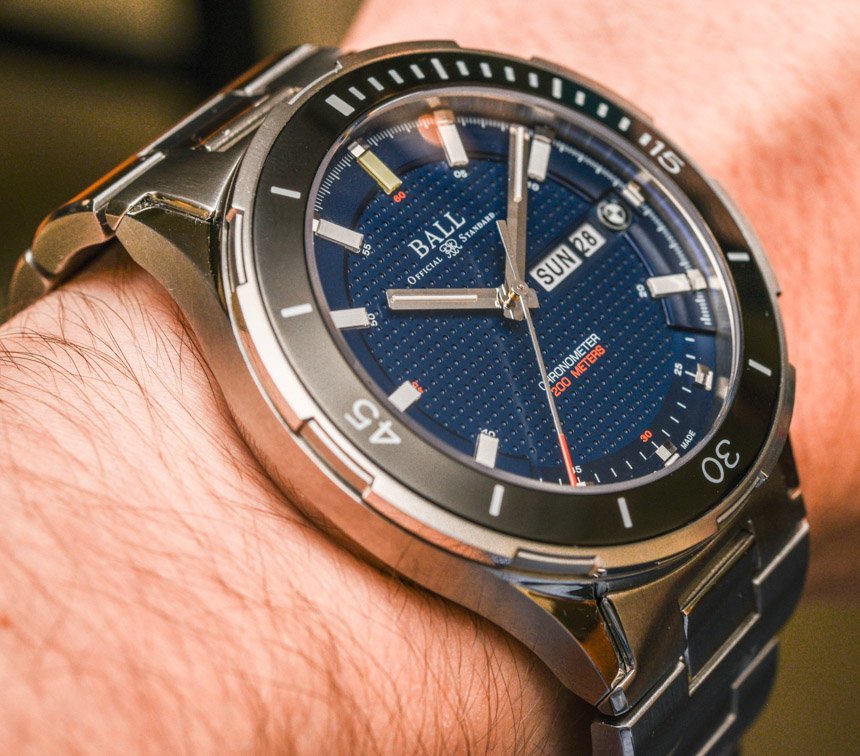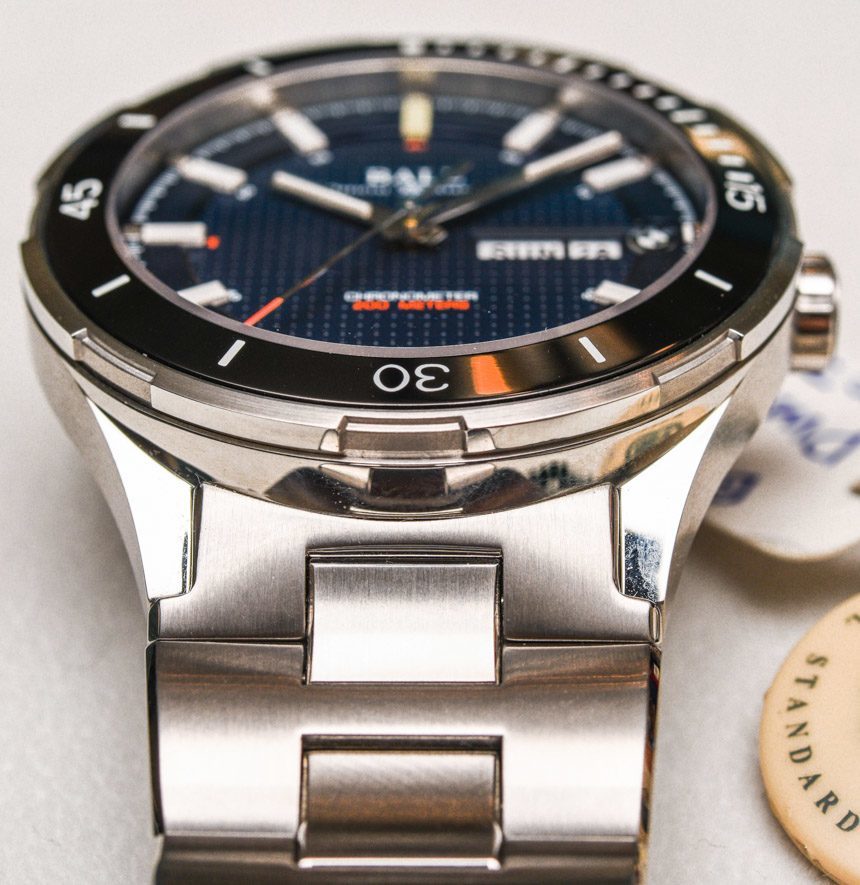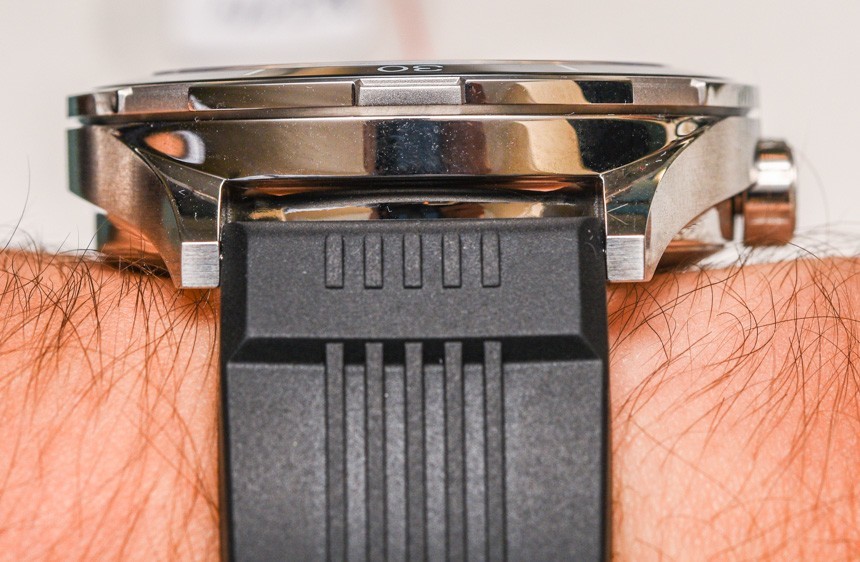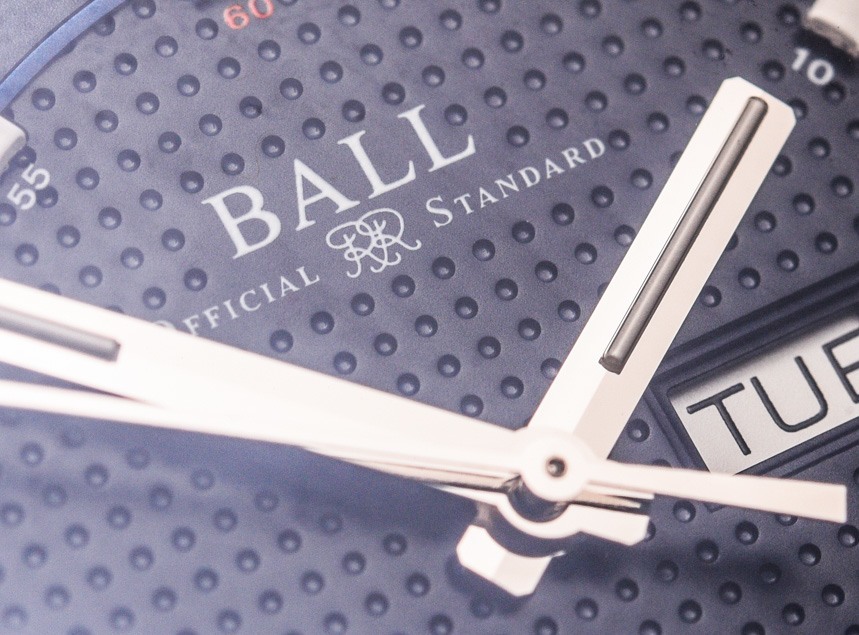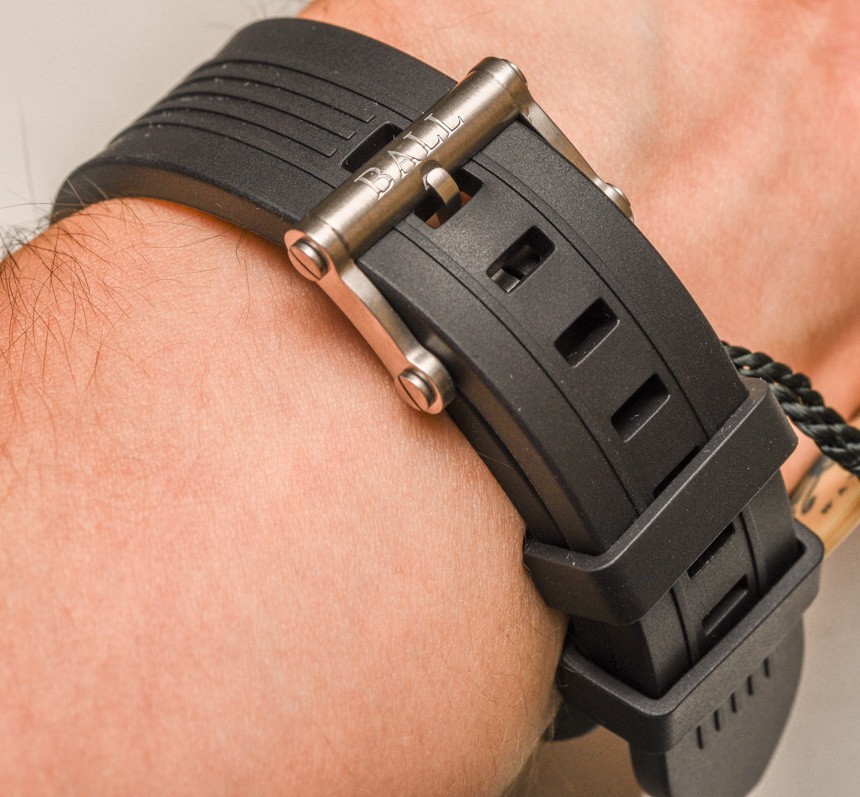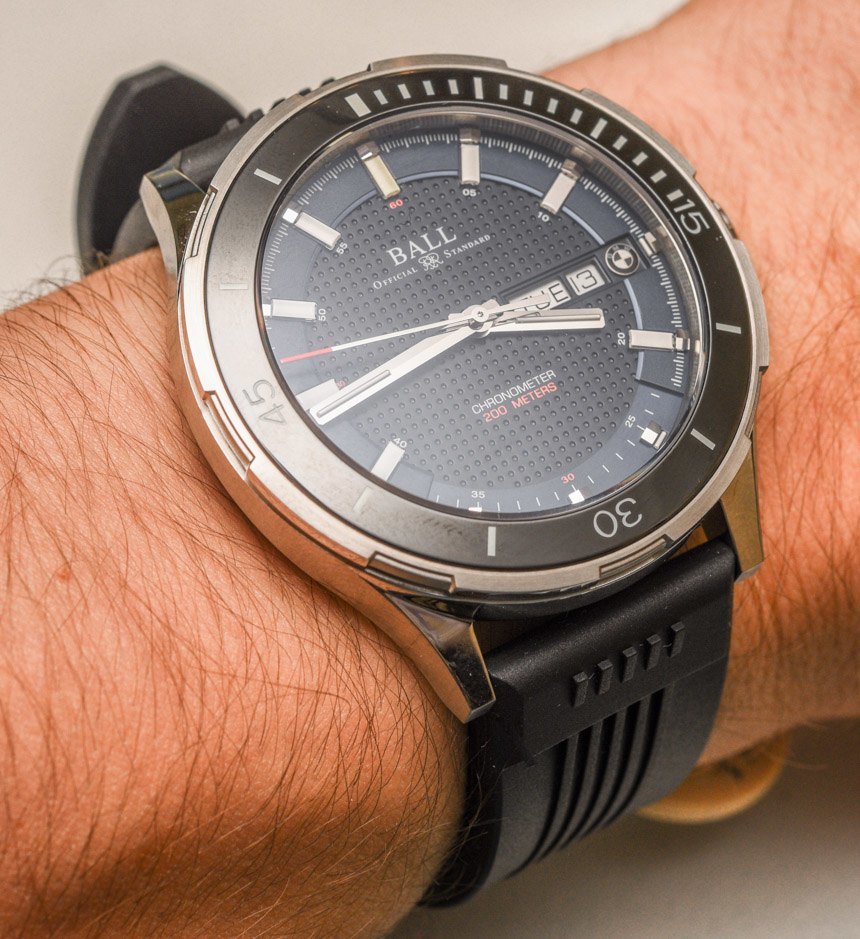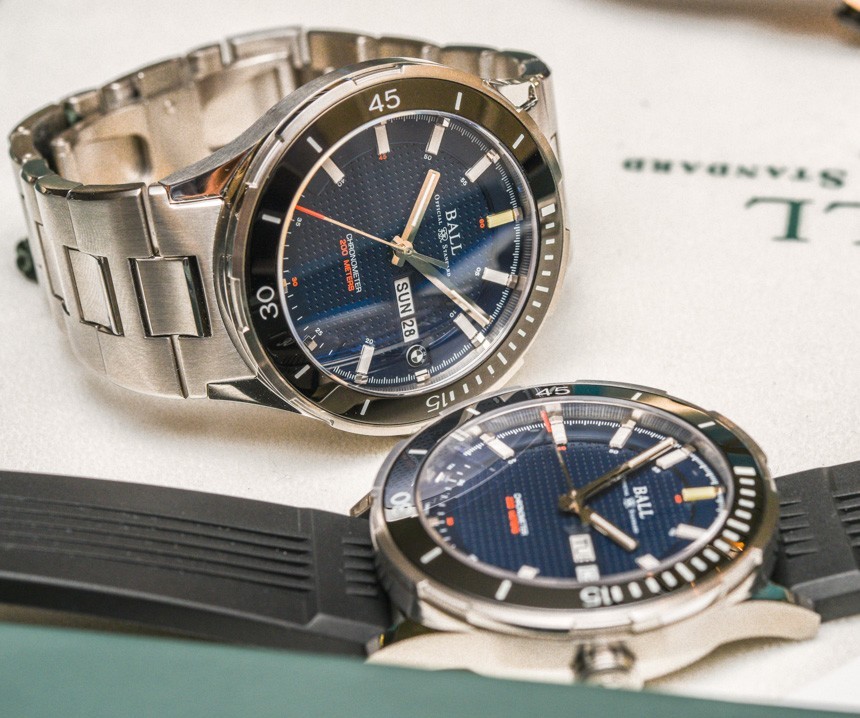Back in 2012, Ball watches made the interesting announcement that they would be producing watches in collaboration with BMW cars – and I thought that was pretty cool. aBlogtoWatch debuted the Ball for BMW watch collection and later went hands-on here. For 2015, Ball has quietly released one new piece in the Ball for BMW watch family with the TimeTrekker collection that includes both blue and black dial versions, as well as the watch on either a steel metal bracelet or a rubber strap.
One of the highlights of the Ball for BMW collection (aside from it being designed by the very talented watch designer Magali Metrailler) is that the BMW branding is rather subtle on the dial. That means the fact that the watch is by Ball but with BMW branding is not “in your face.” A small and tasteful BMW logo exists in a petite form next to the 3 o’clock hour indicator. The logo is there when the wearer wants to be reminded of it, but isn’t even readily apparent to others who view the watch on the wearer’s wrist.
The Ball for BMW TimeTrekker is essentially a watch with the time and a day/date complication. Ball uses a modified version of a Swiss ETA 2836 automatic movement. According to Ball, the movement is given their Amortiser shock protection system. This essentially allows the wearer to twist the back of the watch case in order to lock the automatic rotor from spinning.
The Ball for BMW TimeTrekker watches we saw hands-on were pre-production prototypes, but the case backs still displayed a cool BMW logo-inspired grid that nonetheless allowed for a splendid view of the movement inside. The movement features Ball’s Amortiser system mentioned above, a feature patented by Ball. The point of it is to help prevent damage to the Ball Watches Replica from shock. The catch, of course, is that you need to anticipate when the watch might experience shock in advance. The Amortiser locks the automatic rotor from spinning so that the movement is more protected from the effect of a serious shock.
Of course, when the automatic rotor is locked, it will not turn, and thus, the watch movement will not “self wind.” While the Amortiser feature is cool and works as advertised, it is not something that I think most watch wearers will utilize on a regular basis. In reviewing the Ball Engineer Hydrocarbon Spacemaster II Orbital watch here (that also features the complication) I recall finding the Amortiser system a fun, albeit difficult feature to use for real world applications.
Ball calls this base Swiss ETA movement their caliber RR11002-C, and in addition to the Amortiser system, this 4Hz mechanical movement is provided with COSC Chronometer certification for accuracy. It isn’t clear whether or not the movement will be visible through the caseback window on the final versions.
As promised, I am finally putting these watches together for the enjoyment. A few disclaimers: this is not an ideal matchup. The Omega and Ball are offered in similar sizes and dial up colours, but these particular examples are not perfectly aligned. Still, the overall stylistic and quality points could be determined in the photos. So what do you get for approximately twice the price?The resemblance is instantly obvious. While the Ball has selected to utilize broader-spaced lines, each has chosen the vertical stripes (teak dial). Their hour mark are rather similar.The difference in lume is very apparent even in day light. The Omega’s blue lume is a clean white, where the tritium tubes have a faint green appearance to them. I think they both look great.No doubt partially attributable to the Omega’s grey dial (versus the black one in the Ball), the warmth resistance is noticeably improved on the Omega.The hands and mark are equally nicely done, but also the Omega’s are substantially more complex. Do note, but the large level of gloss used on the interior of the Ball’s day/date display.The different choices daily windows will be highly divisive. Personally, I really enjoy the angular appearance of the Omega, but I’ll admit, the screen is much more readable on the Ball, mostly due to the high contrast appearance. Additional you receive an extra complication with the Ball.There are a few areas that I believe will be incontrovertible. To begin with, the Omega includes a much prettier movement. In addition, it offers a much longer power book, though they share the same 5 position adjustment and COSC score. Additional the ETA-based Ball actually has a slightly smoother sweep hand than the Omega.Here is the Aqua Terra along with the Red Label side by side, immediately following the Omega has been subjected to a bright light.
At 44mm wide in the brushed and polished steel case, the Ball for BMW TimeTrekker is a decent 13.45mm thick. I recall it wearing very comfortably and liking the look of the case a lot. Sure, you could go with the available “rubberized leather strap,” but why not opt for the specially designed (and good-looking) matching steel bracelet. The bracelet not only tapers (which is a sign of great design) but also has some nice edge polishing that I like.
Water resistant to 200 meters and anti-magnetic to 4,800A/m, the Ball for BMW TimeTrekker is a solid sports watch. Of course, this is a dive-style timepiece with a uni-directional rotating bezel that uses a black ceramic insert (good for scratch resistance). Also, the bezel numeral markers are applied with luminant. The dial is also very “diver style” with easy to read hands and a lot of nice details thanks to Magali. You get the look of a Ball for BMW design, but there is something also very decently refined in this look. I don’t drive a BMW at all, but I would still easily wear this timepiece.
Being a Ball, the dial is, of course, outfitted with tritium gas tubes for darkness illumination. You have more traditional round tritium gas tubes in the hands and at the 5, 6, and 7 o’clock hour markers, while the rest of the hour markers use larger, fatter tubes with blue colored tritium lume material. That is except for the 12 o’clock hour marker that uses a cool red colored “fat” tritium tube. There are a total of 14 tritium tubes on the dial.
An interesting design feature on the dial are the different styles of hour markers at the bottom of the dial. This happens to work very well for the Ball for BMW TimeTrekker design, but was, in my opinion, a brave move which could have only come from a very seasoned Ball Watches For Ladies Replica designer.
The black Ball for BMW TimeTrekker dial is bit more on the conservative, timeless side, while the dark blue dial is a bit more hip and contemporary. The blue isn’t necessarily quite as classy as the black dial, but it does have a more sporty, youthful feel. The Ball for BMW collection most certainly exists as a niche within the larger Ball brand, but it is uniquely well done and the BMW connection is probably going to be important for a lot of Ball fans. With that said, even if you don’t have BMW or are ambivalent to the car maker, the Ball for BMW TimeTrekker is still a very solid watch that is different from anything else that Ball produces. Price is $2,999 on a strap and $3,099 on the bracelet. ballwatch.com

